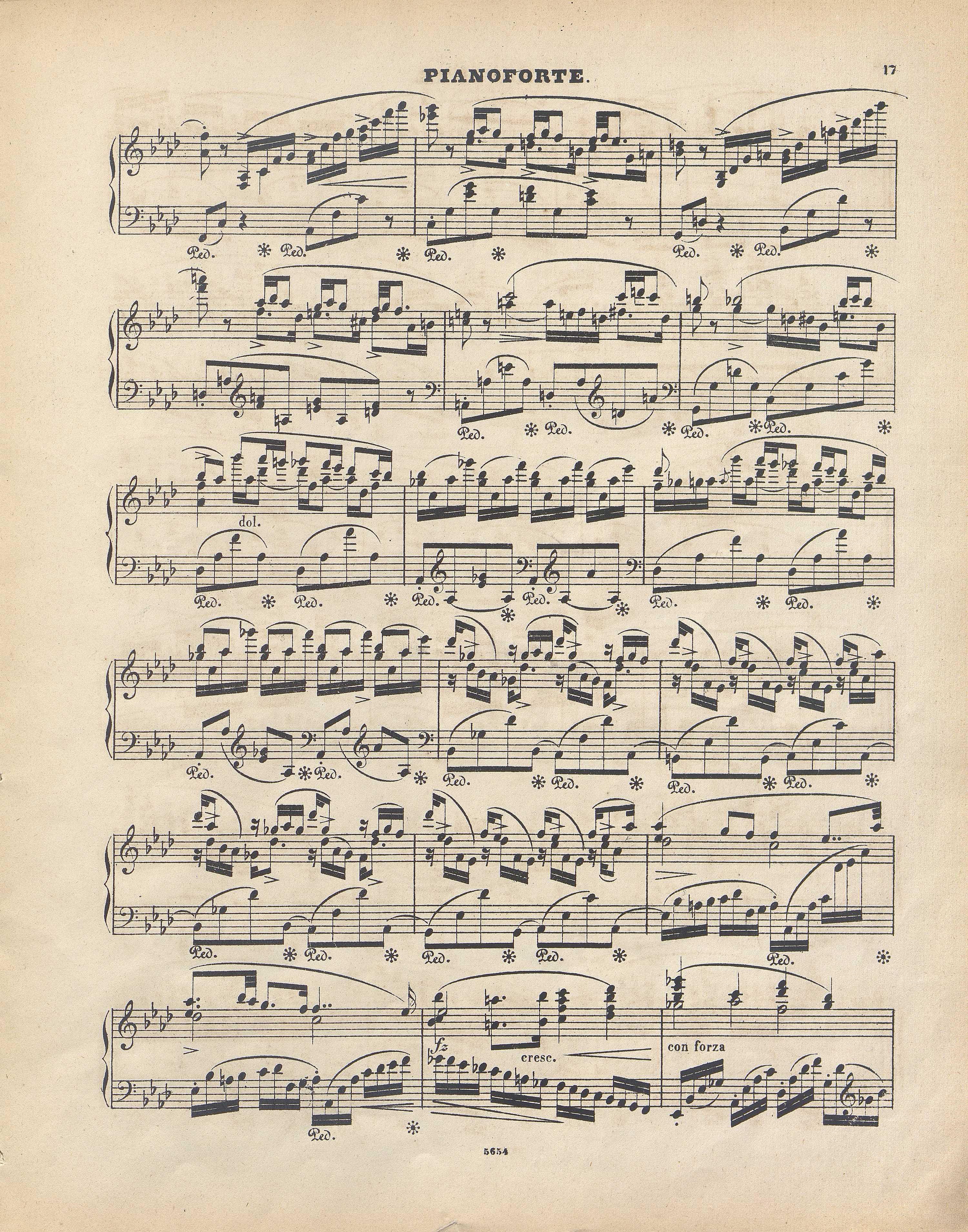Op. 2, Variations in B♭ major
Op. 10, 12 Etudes
Op. 11, Concerto in E minor
Op. 21, Concerto in F minor
Op. 22, Polonaise in E♭ major
Op. 24, 4 Mazurkas
Op. 25, 12 Etudes
Op. 26, 2 Polonaises
Op. 27, 2 Nocturnes
Op. 28, 24 Preludes
Op. 30, 4 Mazurkas
Op. 35, Sonata in B♭ minor
Op. 50, 3 Mazurkas
Op. 63, 3 Mazurkas
Op. 64, 3 Waltzes
(Op. 4), Sonata in C minor




Op. 21, Concerto in F minor, Mvt I
Three flats before g notes visible in A are not written with Chopin's hand. Their omission in GE1 means that they were added later, probably in the time of preparing the first edition of the score or GE2, in which they were included (ca. 1865-1868). The same applies to the
notes visible in A are not written with Chopin's hand. Their omission in GE1 means that they were added later, probably in the time of preparing the first edition of the score or GE2, in which they were included (ca. 1865-1868). The same applies to the  before G at the beginning of bar 324 (as well as bar 316). In ½A the correct text may be unravelled also without these signs:
before G at the beginning of bar 324 (as well as bar 316). In ½A the correct text may be unravelled also without these signs:
-
the use of g
 in bar 322 follows from a natural harmonic course; similarly G in bar 324, which actually does not formally require a
in bar 322 follows from a natural harmonic course; similarly G in bar 324, which actually does not formally require a  ;
; -
in Morch, in the viola and cello parts there are g
 1 and g
1 and g respectively; in both cases the flats are written in a manner not differing from the rest of the notation.
respectively; in both cases the flats are written in a manner not differing from the rest of the notation.
All possible doubts are dissipated by the proofreading of FE (→EE), almost certainly coming from Chopin, in which all necessary flats were added in bar 322 as well as a cautionary  before A
before A at the end of bar 323 and E
at the end of bar 323 and E at the end of bar 324.
at the end of bar 324.
In the text of A we include four added accidentals, yet one should remember that the text written with Chopin's hand is transmitted by GE1.
GE2 included later additions of A and added a necessary  before the penultimate semiquaver in bar 322. In turn, the reviser of that edition did not feel the need to clarify the sound of A
before the penultimate semiquaver in bar 322. In turn, the reviser of that edition did not feel the need to clarify the sound of A and E
and E in the final parts of scale sequences in bars 323-324.
in the final parts of scale sequences in bars 323-324.
Compare the passage in the sources »
category imprint: Interpretations within context; Differences between sources
issues: GE revisions, Foreign hand additions in manuscripts, Authentic corrections of FE
notation: Pitch

